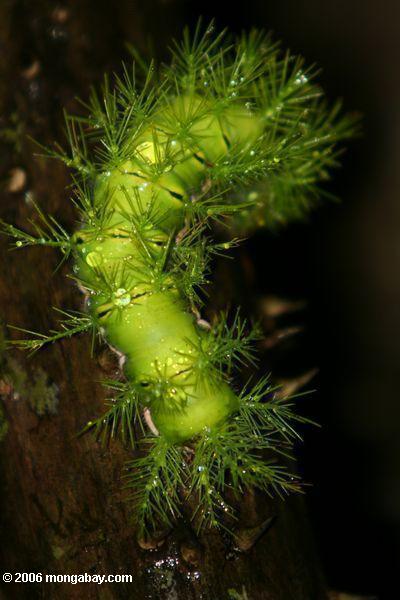The howler in the forest
By Phyllis Sena Nicknamed “Howlers”, Howler monkeys are famously known for their deafening calls that can be heard up to three miles (five kilometers) away in the jungles of Central and South America. A cacophony of loud cries can be heard during dusk and dawn in order to send a message to other monkeys that the territory is being occupied by their group. Howlers are also considered to be the loudest land mammal on Earth. Howlers are...
Tiger Cub Caught on Camera
Written by Jemma Smith This image of a 4-5 month old tiger cub was recently captured on a remote camera in the India’s Bhadra Tiger Reserve. The Bhadra reserve was identified by the Wildlife Conservation Society (WCS) as one of 42 ‘source sites’ that are essential for the future of tigers. These sites are found within 9 different countries and are home to 70% of the remaining tiger population; although only make up 6% of their range....
Turtle Hatchling in Costa Rica
By Jordanna Dulaney A Olive Ridley sea turtle (Lepidochelys olivacea) hatchling. The Olive Ridley is named for its olive-colored heart-shaped shell, which changes from dark grey to olive as the turtle matures. Like other sea turtles, the Olive Ridley nests and hatch in tropical waters and then migrate to subtropical areas like the southeastern or eastern central Atlantic. Although it is considered the most abundant sea turtle in the...
Rare Siamese Crocodile’s Hatchlings Released
By Jemma Smith The Wildlife Conservation Society (WCS) has recently released 19 baby Siamese crocodiles into a local wetland in Lao PDR. The eggs of the crocodiles were discovered and collected during a wildlife survey back in 2011, hatched and reared at Lao Zoo as part of the Community-based Crocodile Recovery and Livelihood Improvement Project. The 19 month old hatchings were released near to where the eggs were found into a ‘soft...
Caterpillars in Colombia
by Hannah Lindstrom Caterpillars are the larval form of moths and butterflies. Since these creatures are so rich in protein, they tend to be a favored food source of many species. As a result, caterpillars have developed many a coping mechanism for this issue. Predators can easily be deterred by the appearance or size of a caterpillar. Bright colors, as seen in these pictures, usually makes an animal think poison, so they will tend to...
Rescued Wooly Monkeys in Colombia
Written by Jordanna Dulaney The woolly monkey (Lagothrix lagotricha) is listed as “Vulnerable” on the IUCN’s Red List. In fact, studies predict that the species will decline at least 30% in the coming 45 years. The IUCN cites hunting, habitat loss due to the expansion of farming land, and pet trafficking. These pictures were taken at a rehabilitation center for animals in the pet trafficking trade in Amacayacu National Park, Colombia....
Sea Turtles Released During Earth Hour
Written by Jemma Smith To commemorate this years Earth Hour and raise awareness of turtle conservation, the Chinese organization Sea Turtles 911 released two Green Sea Turtles (Chelonia mydas) back into the wild during this special hour. Earth Hour encourages businesses and households worldwide to switch off their lights for one hour between 8.30pm and 9.30pm on the 23rd of March. This is to raise awareness of climate change. This...
The river-horse of the Okavango Delta
Written by Alexander Holmgren The word hippopotamus comes from ancient Greek meaning “river horse” and this sturdy animal is the third largest land dwelling mammal in the world. It spends half of its time submerged in large groups in bodies of water such as rivers or lakes taking mud baths to keep itself cool in the hot African day. At dusk, as the sun begins to fall, the hippopotamus will depart from the water to graze on...
Master of Disguise: Oustalet’s Chameleon
These masters of disguise are endemic to Madagascar and can be found in a variety habitats ranging from urban to rural landscapes and moist to dry areas at various elevations. Oustalet’s Chameleon (Furcifer oustaleti) are known as the words longest chameleon maturing to nearly 70cm in length. Due to this widespread range there are listed as Least Concern on the IUCN’s Red List. They mainly feed on insects which they catch with...








